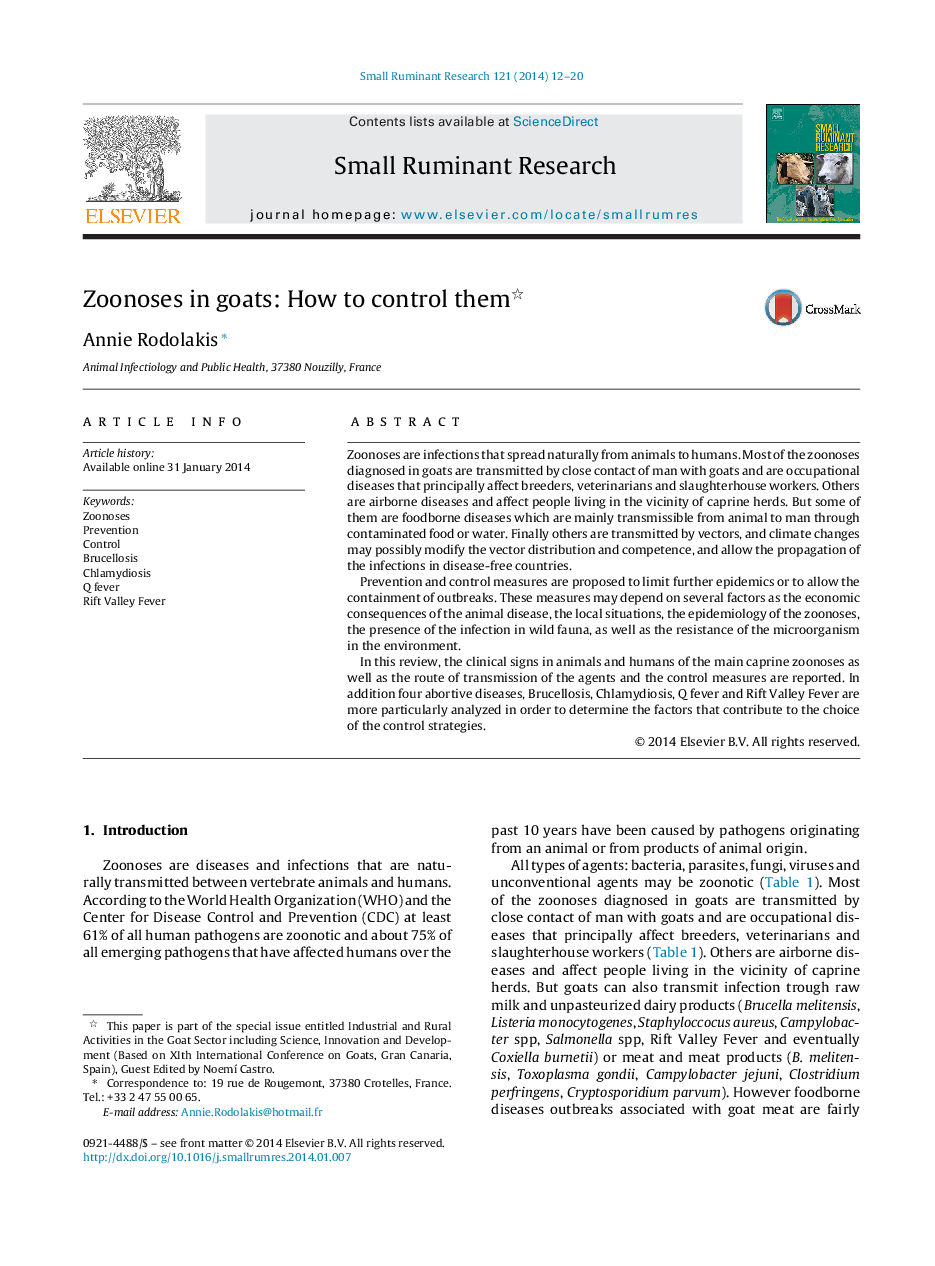| Article ID | Journal | Published Year | Pages | File Type |
|---|---|---|---|---|
| 2457026 | Small Ruminant Research | 2014 | 9 Pages |
Zoonoses are infections that spread naturally from animals to humans. Most of the zoonoses diagnosed in goats are transmitted by close contact of man with goats and are occupational diseases that principally affect breeders, veterinarians and slaughterhouse workers. Others are airborne diseases and affect people living in the vicinity of caprine herds. But some of them are foodborne diseases which are mainly transmissible from animal to man through contaminated food or water. Finally others are transmitted by vectors, and climate changes may possibly modify the vector distribution and competence, and allow the propagation of the infections in disease-free countries.Prevention and control measures are proposed to limit further epidemics or to allow the containment of outbreaks. These measures may depend on several factors as the economic consequences of the animal disease, the local situations, the epidemiology of the zoonoses, the presence of the infection in wild fauna, as well as the resistance of the microorganism in the environment.In this review, the clinical signs in animals and humans of the main caprine zoonoses as well as the route of transmission of the agents and the control measures are reported. In addition four abortive diseases, Brucellosis, Chlamydiosis, Q fever and Rift Valley Fever are more particularly analyzed in order to determine the factors that contribute to the choice of the control strategies.
